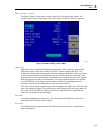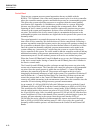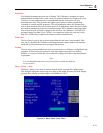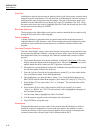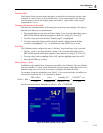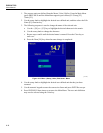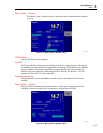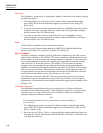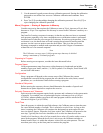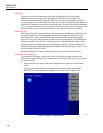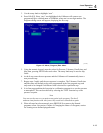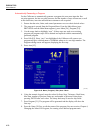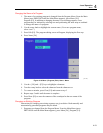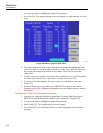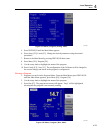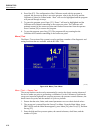
Local Operation
Menu 4
4-17
3. Use the numeric keypad to enter the new calibration password. Setting the calibration
password to zero allows free access to Calibrator calibration and constants. Press
ENTER.
4. Press Yes [F4] to acknowledge changing the calibration password. Press No [F5] to
reject changing the calibration password.
Menu | Program — Storing A Sequence in Memory
Consider an exercise that requires the Calibrator to start at 30 psi, increase to 50 psi, then
decrease to 20 psi. Test sequences like this may be stored in the Calibrator’s memory as a
program.
One benefit of storing a sequence in memory is that the user does not have to command
each pressure separately every time a multipoint test or calibration routine is performed.
Another benefit is that the user can specify a tolerance for each set-point pressure. Once
a tolerance is set, the dwell timer will start counting down instead of waiting until the
pressure is at the exact set-point to start the dwell timer. This gives the user a time
advantage compared to manual mode operation and provides a degree of automation
without the use of an external computer.
Note
The Calibrator can store up to 1,000 program steps that may be divided
among a maximum of 20 named programs.
Preparing to Program
Before entering a test sequence, consider the items discussed below.
Program Name
Valid program names range from one to eight characters in length and can include
numbers, upper case letters, and the /, %, and # symbols. For example, Exer#14 and %FS
test are both valid names.
Configuration
Since a program will depend on the current setup of the Calibrator (the current
configuration is stored with the program) the user should set the units, limits, control
parameters, etc., to the desired values before creating a program.
Number of Set-points
Before entering the sequence, the user should determine the number of upscale and
downscale set-points required to complete the exercise.
Set-point Pressure and Tolerance
Each set-point in the program requires both a pressure and a tolerance, in the current units
of measure. For example, one set-point might require a tolerance as low as 0.05 psi
(0.35 kPa), whereas another set-point in the same program could be satisfied with a
tolerance as high as 5 psi (0.35 kPa).
Dwell Time
Once the pressure is within the specified tolerance, the Calibrator starts a timer that runs
for a user-defined number of seconds. This is referred to as dwell time. As long as this
timer is running, the Calibrator will remain at the designated set-point unless the max
time (see below) elapses. When the dwell time expires, the Calibrator will proceed to the
next step. Typically the dwell time should be set to a value less than the max time.
Usually dwell time has a value of a few seconds, but a value of 0 can be used to create a
pause in the program. When the dwell time is set to zero, the Calibrator switches to
manual control once it is within the tolerance value of the set-point pressure. The user
must then press a key on the front panel to continue the program.



